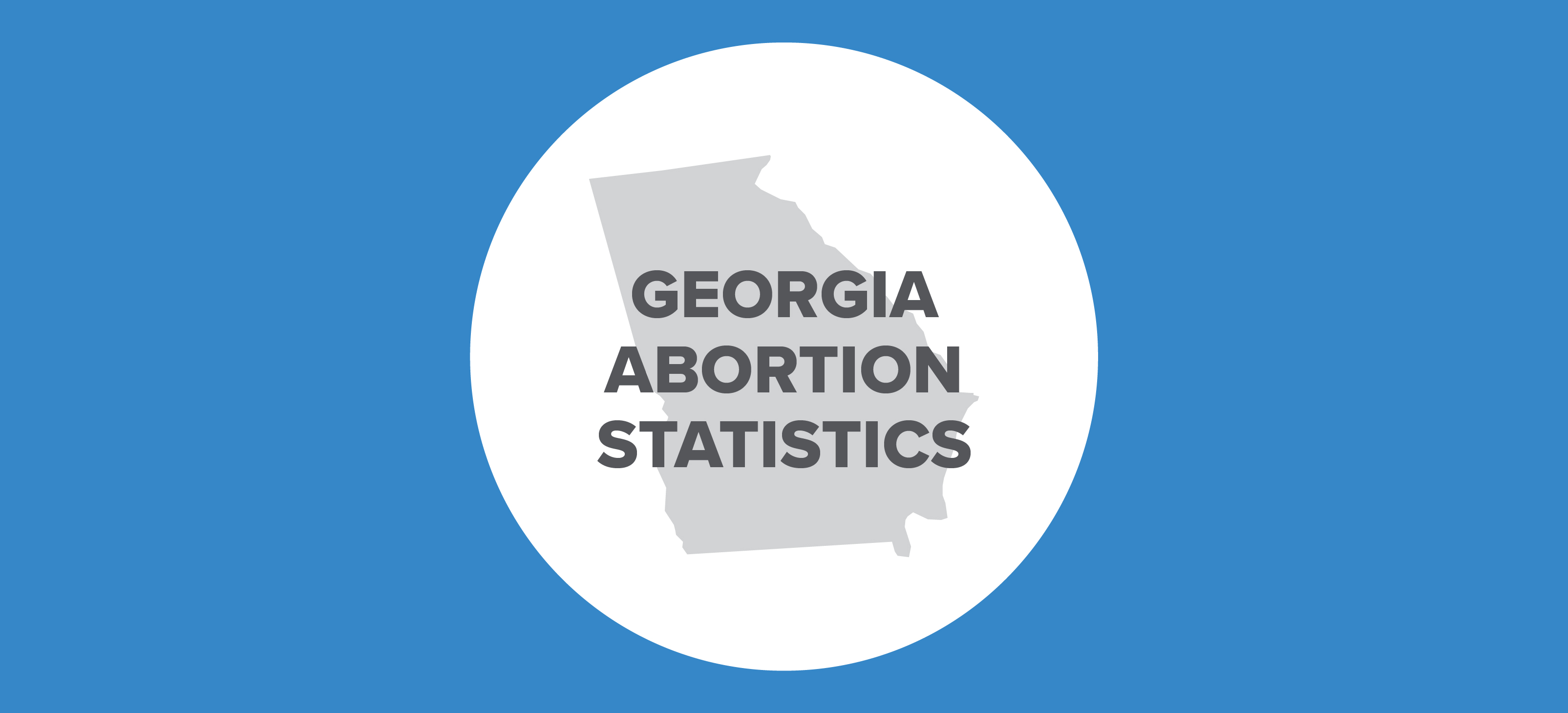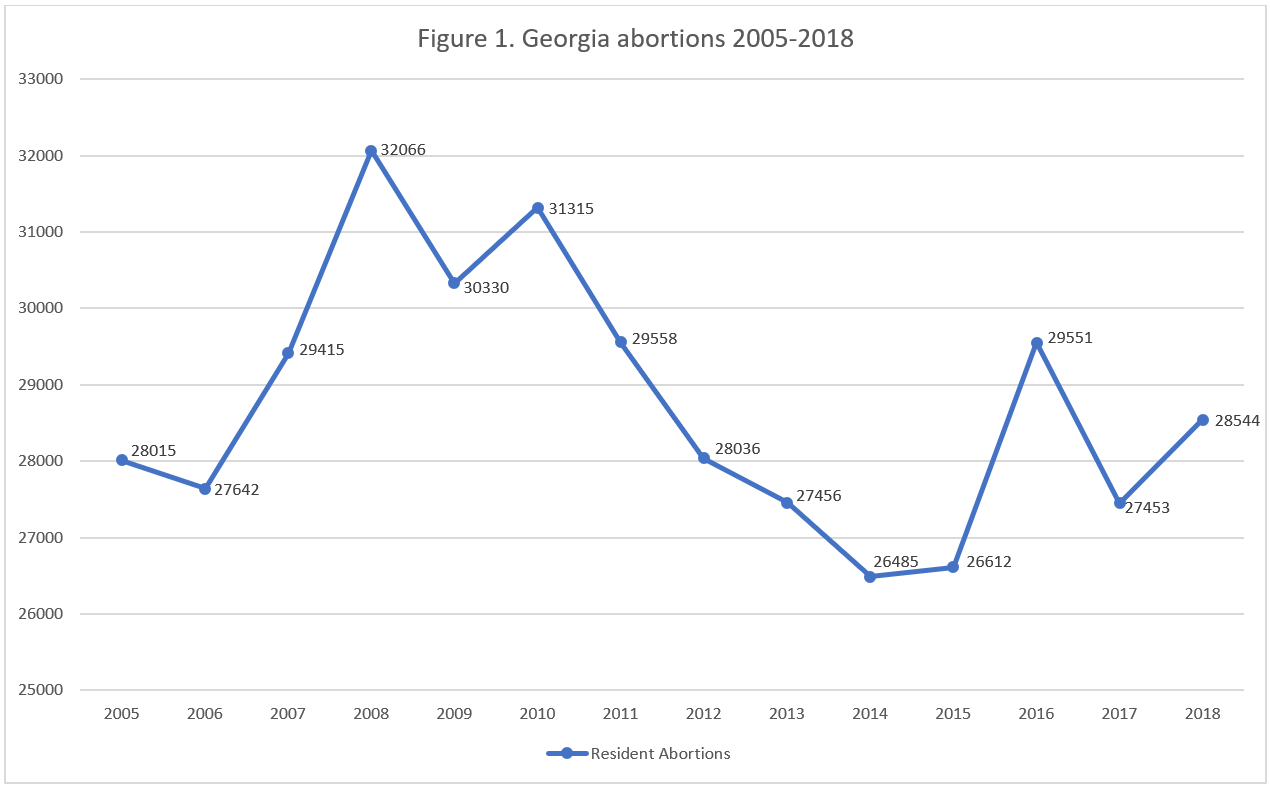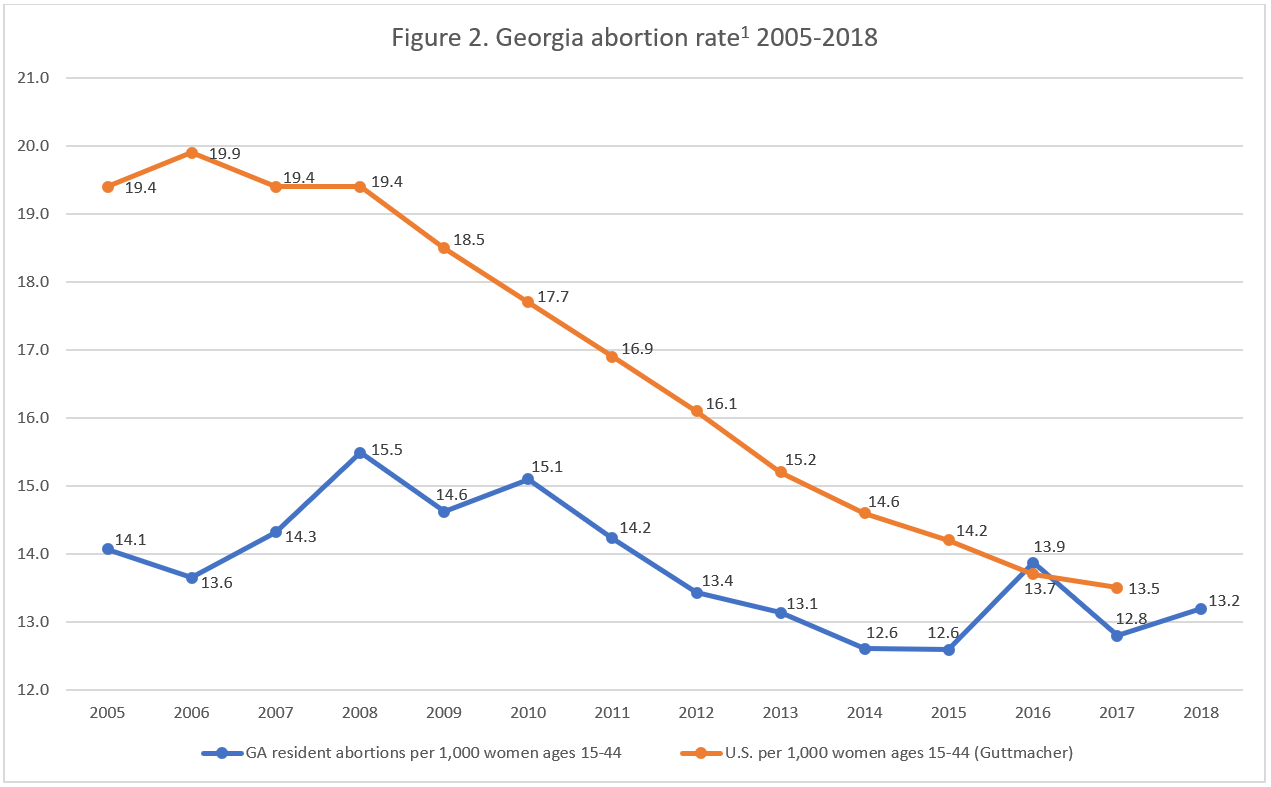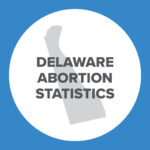Abortion Reporting: Georgia (2018)

Georgia abortion statistics for 2018 were made available online in August 2019. Abortions performed on Georgia residents increased between 2017 and 2018.
Changes in Georgia Abortions, 2017-2018

Information on chemical abortions performed in Georgia and Planned Parenthood’s Georgia market share is not publicly available.
Abortion Totals and Trends
In 2018, 28,544 abortions were reported to have been performed on Georgia residents (Fig. 1). Georgia makes resident abortion data available on its Online Analytical Statistical Information System (OASIS) but does not publish information on abortions performed in Georgia on nonresident women. Since 1994, the earliest year of data in OASIS, abortions have dropped by 15 percent. However, abortions increased by four percent from the total reported in 2017. The Charlotte Lozier Institute estimates that Georgia’s abortion rate in 2018 was 13.2 resident abortions per 1,000 women of childbearing age, close to the national rate (Fig. 2).
State Report Summary
All of the demographic information available in OASIS is for resident abortions only. As in previous years, women in their twenties composed the largest age group, undergoing 59 percent of the abortions. Twenty-eight percent were performed on women ages 20 to 24 and 31 percent on women ages 25 to 29. Another 30 percent were on women in their thirties (19 percent on women ages 30 to 34 and 11 percent on women ages 35 to 39). Four percent were age 40 or older, and eight percent were age 19 or younger, including 56 girls under the age of 15.
More than half (55 percent) of the abortions reported in 2018 were performed on African American Georgia residents, while 20 percent were performed on white women. Four percent of the abortions were on Asian women. Native Hawaiian or Pacific Islander women were not quite 0.2 percent, and American Indian or Alaska Native women were just over 0.1 percent of the total. Two percent of the women were multiracial. However, a full 20 percent of the women did not have their race reported. The Charlotte Lozier Institute estimates that the African American abortion rate was 19.7, more than four times the white rate of 4.8, but because race was not reported for so many abortions the actual rates were likely even higher. Eight percent of the women were Hispanic, 76 percent were non-Hispanic, and 17 percent did not have their ethnicity reported.
Georgia Counties
In 2018, six of Georgia’s 159 counties had more than 1,000 residents obtain abortions. These six counties (Fulton, Dekalb, Gwinnett, Cob, Clayton, and Chatham) represent Georgia’s most populous counties. All but two of Georgia’s 15 abortion centers are located in those six counties.
Twelve counties reported abortion rates of less than one abortion per 1,000 resident women of childbearing age, including five counties with zero resident women undergoing abortions. All 12 counties are on or near the Florida border. It is possible that residents of these counties may choose to travel to Florida for abortions and that these abortions do not always get reported back to the Georgia Department of Public Health.
State Ranking
In the Charlotte Lozier Institute’s 2016 survey of United States abortion reporting, Georgia’s reporting was ranked at 25th best. Georgia’s reporting remains limited. The state health department only makes available data on residents, but according to a separate report by the U.S. Centers for Disease Control and Prevention, 13.4 percent of Georgia abortions in 2016 were performed on nonresident women. To improve its reporting, Georgia could report data for all abortions performed in the state. Georgia could also report the types of abortion procedures used and the gestational ages at which they were performed, as well as where in the state they occurred. The state’s comprehensive abortion reporting system already collects a wealth of data, including these recommended data points above, which could be made publicly available to Georgia citizens and researchers.


- Starting with the 2018 abortion reports, abortion rates are calculated by the Charlotte Lozier Institute to allow for easier state-to-state and year-to-year comparisons. Rates were calculated by CLI using population estimates from the United States Census Bureau. The rates were calculated using the following formula: (abortions performed on Georgia residents ÷ number of resident women ages 15-44) x 1,000. Rates may differ slightly from previous CLI articles due to revised population estimates. CLI rates do not match rates calculated by the state of Georgia because Georgia uses the state population of women ages 10 to 55 as the denominator.
Click here to view reporting from:20222021202020192017
























